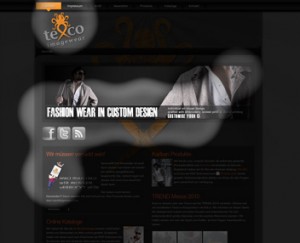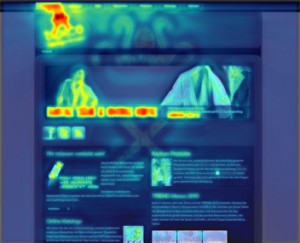News
Food for Thought: The Indian Biotechnology Industry – Opportunities for Europe
The Indian biotechnology industry is growing at record speed, both in terms of turnover and investments. While Indian biotech is recognized in the West for high quality services, bioinformatics and manufacturing, it also offers great opportunities for conducting clinical trials and manufacturing of biosimilars. Only recently, European companies have started to realize that India also is a huge and receptive market for innovative drugs and medtech products.
With a consistent double digit growth rate throughout the last decade the Indian biotechnology industry has been recognized as a sun-rise industry not only in India but also globally. According to a survey based on inputs from over 150 biotech companies, conducted by Biospectrum – Association of Biotechnology Led Enterprises, Bangalore India (2010-2011), the Indian biotechnology industry posted revenues of $ 2.9 billion, in spite of the global recession during 2009 and slow recovery during 2010. The total turnover is expected to reach $ 8.6 billion in 2015 with an anticipated annual growth rate of 30%.
Five Segments
The Indian biotechnology industry has five thriving segments – agro-biotech, bio-industrial, bio-informatics, bio-pharma and bio-services. Among these five sectors, the bio-pharma segment has seen major growth stimulations retaining the first position in turnover and investment, closely followed by the bio-industrial segment which has registered the fastest growth rate within the sector, surging from less than 5% market share five years ago to over 14%. Recently, the Indian Biotechnology sector has witnessed close to 50 major deals, a development which has boosted investment in this sector and catalyzed its growth.
India offers low-cost, top quality manufacturing facilities as well as research and development capabilities – not only in the field of small molecule generics, but also in drug development and innovative formulations. Another strength is in the well-developed segment of computational biology and bioinformatics. India fully respects the international standard of intellectual property rights and has an abundant pool of well-trained scientists both at pre- and post-doctoral level, who are well versed in English and are available at a fraction of cost required in Europe. Thus, a large number of biotech companies in India offer R&D support and services related to biotechnological analytics, ranging from large scale DNA sequencing, gene cloning, fermentation technology, small animal experimentation to protein purification. Many biotech and pharmaceutical companies in developed nations faced with crunch in funding are taking cost saving advantage by outsourcing some of their research and development projects to Indian companies.
Biosimilars and Clinical Trials
Two sectors within the broad framework of biotechnology, (a) biosimilar manufacturing and R & D and (b) clinical research operations, are currently receiving phenomenal industry interest. According to the report “Biosimilars and Biobetters: Positioning for a New Market”, a large number of biologics with a potential value of about $59 billion are threatened by competition from biosimilars because of expired or near-to-expiration patents. It is expected that by 2013, biologics sales will have almost doubled to $202 billion, of which $80 billion will be susceptible to biosimilar competition, and biosimilars could generate a global market of $5.6 billion. India is well positioned to capture a sizeable portion of this market. The turnover of Indian biosimilar products is expected to have increased from $ 200 million in 2008 to $580 million in 2012.
India is also gaining importance as a top clinical trial destination, boosted by a large number of world class hospital chains equipped with the latest medical technology and staffed with well qualified medical professionals, being established throughout India. Together with a large number of well qualified companies (compliant in GCP, GLP, ICH and ISO standards) offering services in conducting clinical research this makes India a destination of choice for saving time and money with clinical trials. According to a joint study by an industry body and Ernst and Young (E&Y) released in August 2009, industry-sponsored Phase II and Phase III clinical trial sites in India have grown by 116 per cent from June 2008 to August 2009, advancing the country from rank 18 to 12 across the 60 most active countries. India participates in 7% of the global Phase III trials and 3.2% of Phase II trials, with a 39% CAGR of industry-sponsored trials from 2004-08.
Therefore, by collaborating with Indian companies, European companies can considerably save on their R&D budget by cost cutting and speeding up their discovery process.
Huge Market
But India has more to offer: the country is a huge market for innovative products, services and technologies that companies in Europe can offer. However, the lucrative Indian market can be quite challenging and therefore a thorough preparation is necessary before entering the market. It is recommended that companies aiming to enter India must plan their strategy well. They should gain firsthand experience and insight by visiting India, talking to their potential partners, clients and investors. This process can be considerably aided by professional experts who are operating in Europe and have a thorough knowledge of India and the science behind the biotechnology business. In addition, support from organizations like the various external Chambers of Commerce established throughout Europe, the Indo-German Chamber of Commerce, Trade Associations, the IGEP Foundation, commercial sections of embassies operating in India, etc. can be helpful. Attending specific and focused trade fairs in India or Indo-German Biotech Conferences being held in Germany can be beneficial, too.
Dr. Amal Mukhopadhyay is founder and CEO of ELGA Biotech, Hamburg, an organization dedicated to promote Indo-German cooperations in biotechnology and life sciences.




